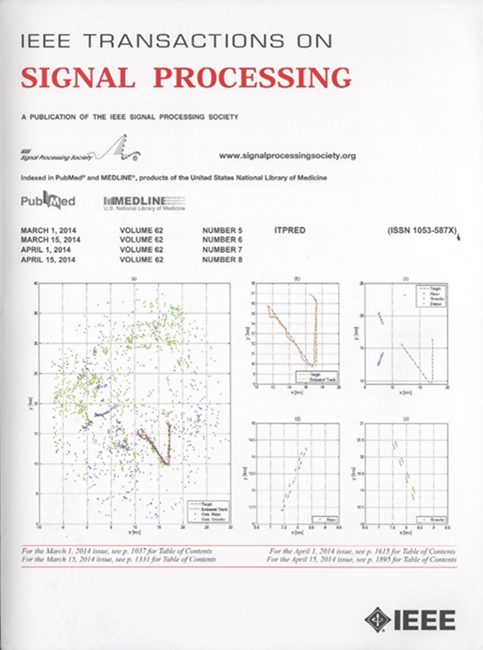Gohberg-Semencul Toeplitz Covariance Estimation via Autoregressive Parameters
IF 4.6
2区 工程技术
Q1 ENGINEERING, ELECTRICAL & ELECTRONIC
引用次数: 0
Abstract
The use of prior structural knowledge is essential for the estimation of covariance matrices and their inverses when only few data samples are accessible. A well-known example is the knowledge that the covariance matrix is Toeplitz-structured, which occurs when dealing with wide-sense-stationary processes. Exploiting the close relation between autoregressive parameters and inverse covariance matrices, this paper introduces a new class of estimators for Toeplitz-structured covariance matrices and their inverses. To achieve this, we derive novel constraint sets for autoregressive parameters by leveraging their connection to the so-called Gohberg-Semencul decomposition. While these constraint sets guarantee the corresponding inverse covariance matrix to be positive definite and, thus, enable a proper estimation of the covariance matrix by inversion, they also build a means to control the estimator's performance by hyperparameter tuning. The derived constraint sets comprise simple box constraints enabling computationally cheap estimators in closed form. Due to the ensured positive definiteness, the proposed estimators perform well for both the estimation of the covariance matrix and its inverse. Extensive simulation results validate the proposed estimators’ efficacy for several standard Toeplitz-structured covariance matrices commonly employed in a wide range of applications.求助全文
约1分钟内获得全文
求助全文
来源期刊

IEEE Transactions on Signal Processing
工程技术-工程:电子与电气
CiteScore
11.20
自引率
9.30%
发文量
310
审稿时长
3.0 months
期刊介绍:
The IEEE Transactions on Signal Processing covers novel theory, algorithms, performance analyses and applications of techniques for the processing, understanding, learning, retrieval, mining, and extraction of information from signals. The term “signal” includes, among others, audio, video, speech, image, communication, geophysical, sonar, radar, medical and musical signals. Examples of topics of interest include, but are not limited to, information processing and the theory and application of filtering, coding, transmitting, estimating, detecting, analyzing, recognizing, synthesizing, recording, and reproducing signals.
 求助内容:
求助内容: 应助结果提醒方式:
应助结果提醒方式:


